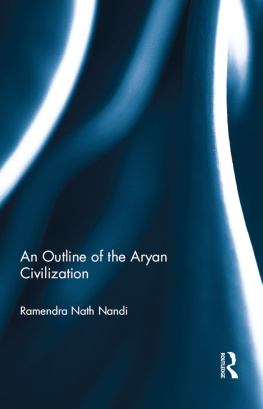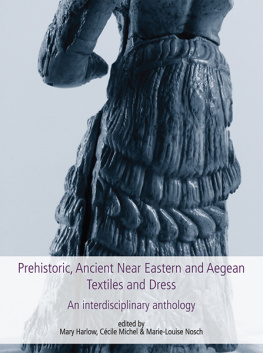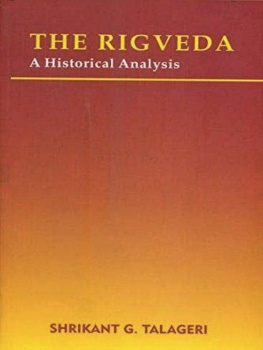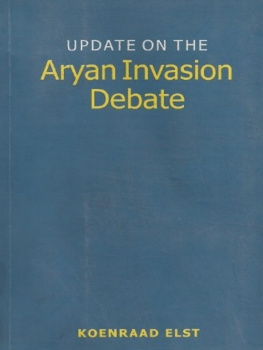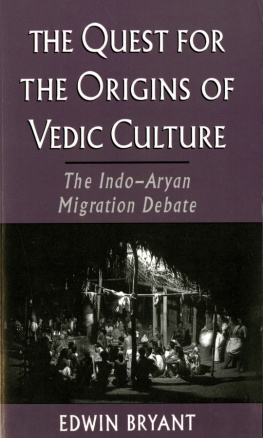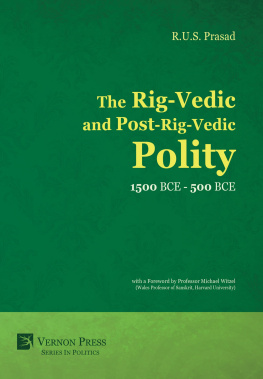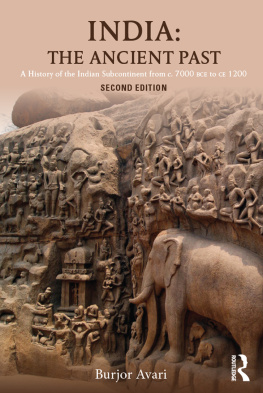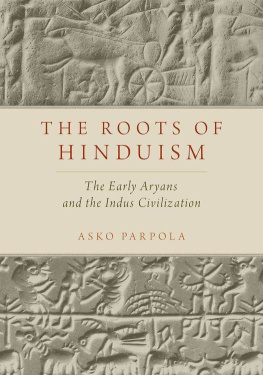Contents

AN OUTLINE OF THE ARYAN CIVILIZATION
An Outline of the Aryan Civilization
RAMENDRA NATH NANDI

First published 2018
by Routledge
2 Park Square, Milton Park, Abingdon, Oxon OX14 4RN
and by Routledge
711 Third Avenue, New York, NY 10017
Routledge is an imprint of the Taylor & Francis Group, an informa business
2018 Ramendra Nath Nandi and Manohar Publishers & Distributors
The right of Ramendra Nath Nandi to be identified as author of this work has been asserted by him in accordance with sections 77 and 78 of the Copyright, Designs and Patents Act 1988.
All rights reserved. No part of this book may be reprinted or reproduced or utilised in any form or by any electronic, mechanical, or other means, now known or hereafter invented, including photocopying and recording, or in any information storage or retrieval system, without permission in writing from the publishers.
Trademark notice: Product or corporate names may be trademarks or registered trademarks, and are used only for identification and explanation without intent to infringe.
Print edition not for sale in South Asia (India, Sri Lanka, Nepal, Bangladesh, Afghanistan, Pakistan or Bhutan).
British Library Cataloguing in Publication Data
A catalogue record for this book is available from the British Library
Library of Congress Cataloging in Publication Data
A catalog record for this book has been requested
ISBN: 978-1-138-09474-1 (hbk)
ISBN: 978-1-315-10114-9 (ebk)
Typeset in Minion Pro 11/13
by Ravi Shanker Delhi 110 055

To the Loving Memory of
NARENDRA NATH BHATTACHARYYA
The Man and the Historian
Contents
This book is the third in a series of studies on old Vedic society as outlined in the hymns of the gveda. The first of these studies (Nandi, 2001) emphasized the need to revisit the discourse from a holistic perspective and dislodge many of the misinformed ideas circulating in certain writings. The next work (Nandi, 2009) was much more multidimensional in scope in terms of both interpretative logic and intensive data recovery from all relevant disciplines bearing on the subject, a task not taken earlier. A major thrust of this work was to explain the origins of an ideology of nature worship as outlined in the gveda. and firmly situate the text in the Bronze Age universe of the Indo-Iranian subcontinent. With historical and geographical parameters of the old ryan society settled for good, it is time to have a good look at the ryan world of matter, not studied earlier on the spectrum of a monograph.
Understandably, the central focus of this book is on the physical infrastructures which sustained and promoted production, accumulation and distribution of social goods. With territorial kingdoms, fortified urban spaces, high end agricultural production, an elaborate water management system, organized craft production and long distance trade by land and sea besides a thriving service sector, the discourse all together reaches a different discursive platform. Needless to say that all these processes required an overarching power structure for a smooth run. The citadels, variously described as pur, durga, vtra and vjana which ensured the security of life and resources constituted the hub of a powerhouse in a particular locality. Since a power elite could not have erected massive walled settlements without an expansive territory to generate and multiply all types of resources from different sectors, trade, agriculture, craft shops, pastures, forests, hill tracts and coastal colonies, large and small territorial kingdoms would automatically be around. A well-organized distribution mechanism is also on view on the basis of copious textual references to long distance trade by land and sea.
The dispensation functioned perfectly well during the high tide of an interactive city-based global order. But with the breakdown of the world system throughout the civilized space, signs of unrest became visible, be it the capture of citadels, fights for fertile agricultural land, destruction of drainage works and increasing perils of long distance journeys whether by sea or land. All these aspects of the old Vedic society have naturally demanded separate chapters. The two concluding chapters of this book pick up their thread from the introductory segment which deals at length with the plurality of old Vedic society in terms of ethnic, linguistic, physical and cultural divergences and, accordingly undertake detailed examination of linguistic diversities and the diversity of funerary behaviour in the entire area.
In the matter of text study I have depended on the interpretation of Syaa. But where the commentator has provided more than one interpretation to a stanza, I have exercised my own judgement to select the one that falls in line with the context and the narrative.
Like in the two earlier works, the main basis of text study in this book has been the four volume gveda Sahit with the commentary of Syaa, edited by F. Max Mller and first published in 1890-2. Text citations and other references appear in the main narrative and not in the form of footnotes. The text citations are in the order, maala, skta and k like 10.12.3. The list of references is confined to works actually cited rather than all the readings bearing on this book. Though not mentioned, these other readings have been immensely beneficial in weaving the fabric of the present narrative. In the course of my investigation I have received valuable help from friends and acquaintances. I thank them all.
R.N. NANDI
Patna
21 October 2015
The Meaning of rya
Contrary to the common perception of a homogeneous and monolithic ethno-linguistic community, the rya of the gveda represented a loose association of diverse and disparate ethno-cultural groups at the same or different levels of social formation, interactive or unrelated, each with a separate identity but all thriving together under a common religious umbrella. Though the point was made more than two decades ago (Nandi, 1993), it seems to have been a little too unconventional to shake off path dependency in this specific area of study. The plurality of the rya, however, seems well recognized in certain informed writings. According to one opinion, the term rya represented a broad religious ideology, which could accommodate any one who subscribed to it (Erdosy, 1989: 41). However, Erdosy does not explain why the ideology should have originated where and when it did. Another scholar holds that as a sociological expression, the term ryan denotes all those who took part in the concerned sacrifices and festivals (Kuiper, 1991, 96). There are clear indications that the Vedic speakers of the gveda knew Sanskrit, and interacted with Dravidian and Munda speakers (Kuiper, 1948; 1955; 1962). There may have been other ethnic or linguistic groups subscribing to the ideology but not always identifiable.
In the bardic circles, the term rya, which appears in nearly 37 passages was signified as respectable, noble, faithful, devoted or righteous. None of these meanings has any ethnic significance. If anything, the term meant a righteous person, who strictly followed a religious ideology. Those who subscribed to the ideology of Daiva worship were recognized as rya or noble and those who did not, were denounced as Dasyu or enemy. This is the precise import of a passage (1.51.9) in which Indra is implored to recognize the ryas who are the followers of right conduct and the Dasyus or the enemies who are non-believers (

